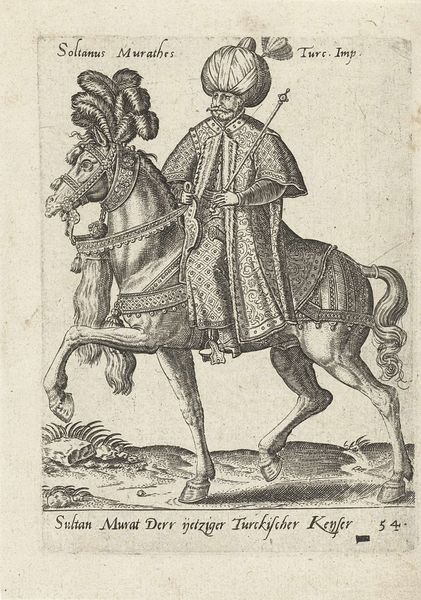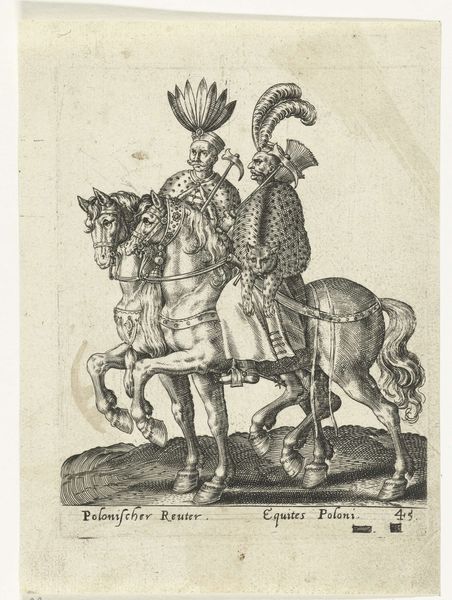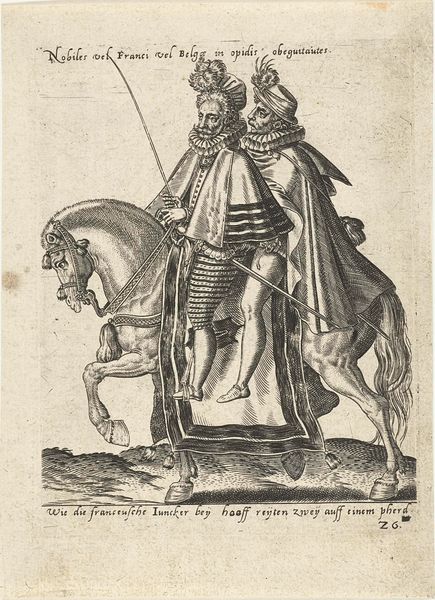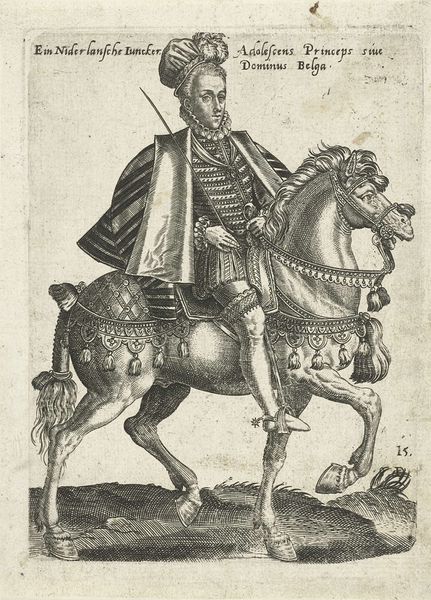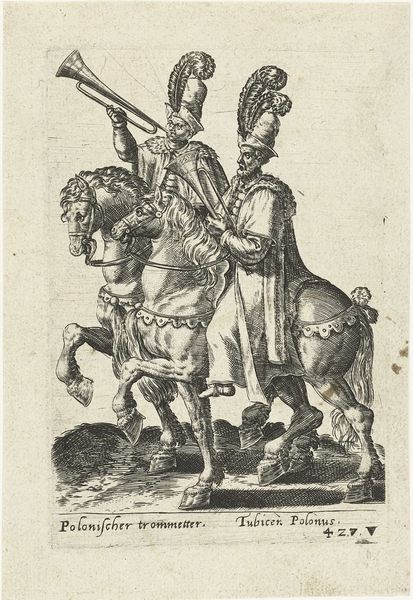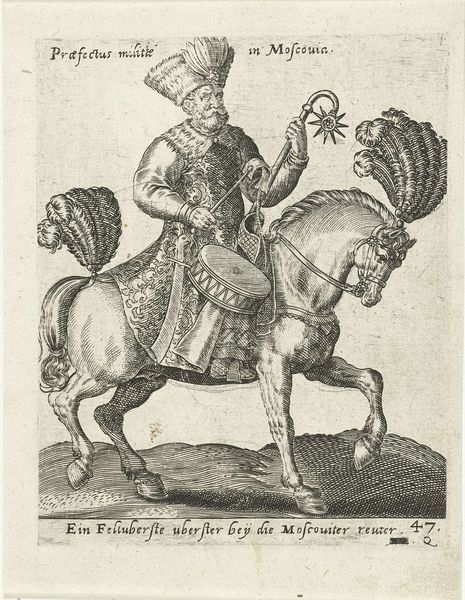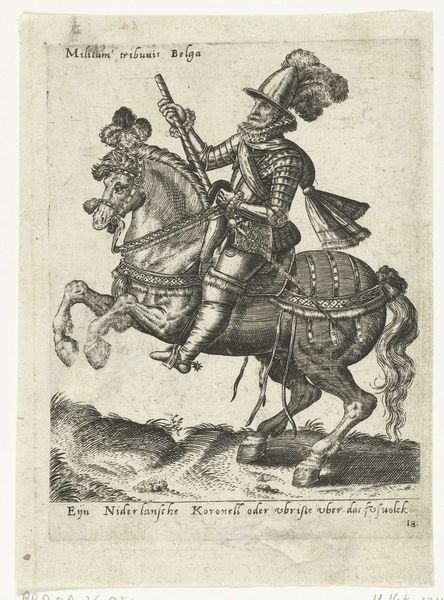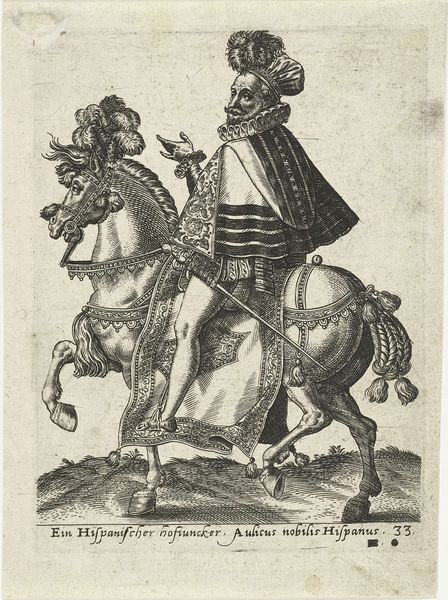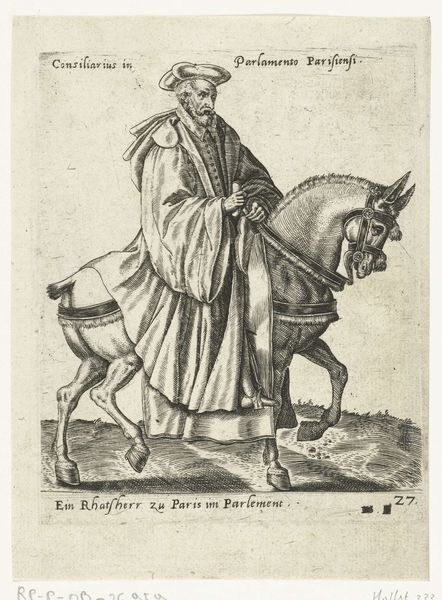
print, engraving
#
portrait
# print
#
old engraving style
#
mannerism
#
engraving
#
erotic-art
Dimensions: height 145 mm, width 112 mm
Copyright: Rijks Museum: Open Domain
Abraham de Bruyn made this print of an English courtier on horseback sometime in the late 16th century. The image is interesting for what it can tell us about the circulation of cultural stereotypes. De Bruyn was based in Cologne, then a thriving center for printmaking, and this image was part of a series depicting figures from different European countries. What visual cues mark this figure as specifically English? The ruff, the cape, the hat, and, of course, the horse, all speak to the wealth and status of the English gentry. This image tells us a lot about the social structures of its time. It reflects the growth of a wealthy merchant class with close ties to the royal court. The print would have circulated among a similarly wealthy class on the continent, keen to know about the fashions and customs of foreign elites. To understand the image better, we might research the fashion for ruffs in Elizabethan England, or study the market for horses among the English gentry. The point is that the image only yields its secrets when we look beyond the art object itself.
Comments
No comments
Be the first to comment and join the conversation on the ultimate creative platform.
